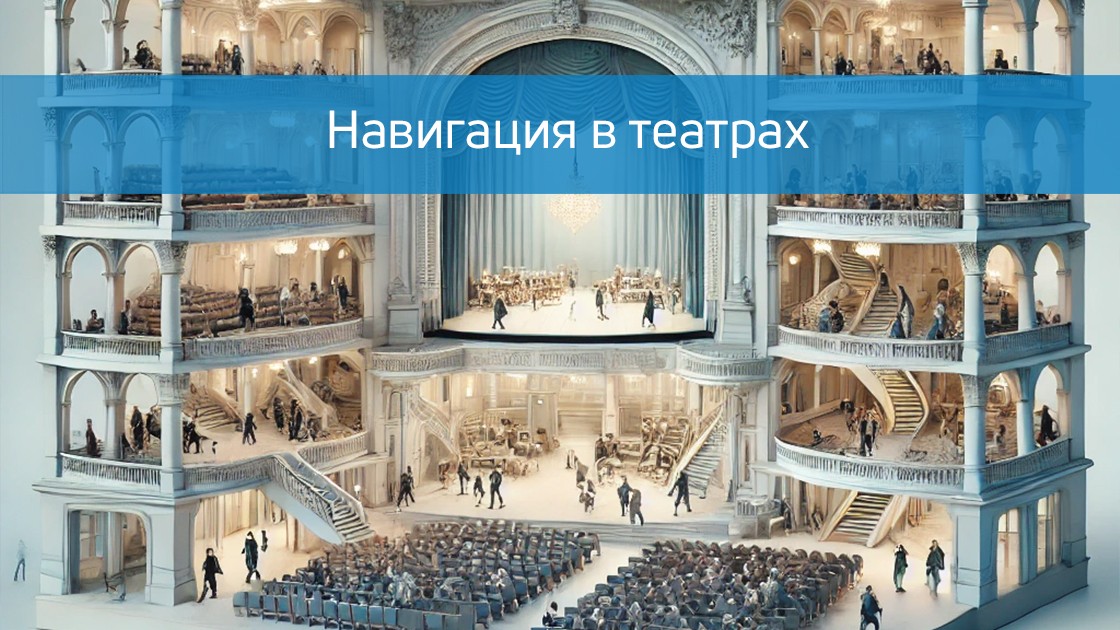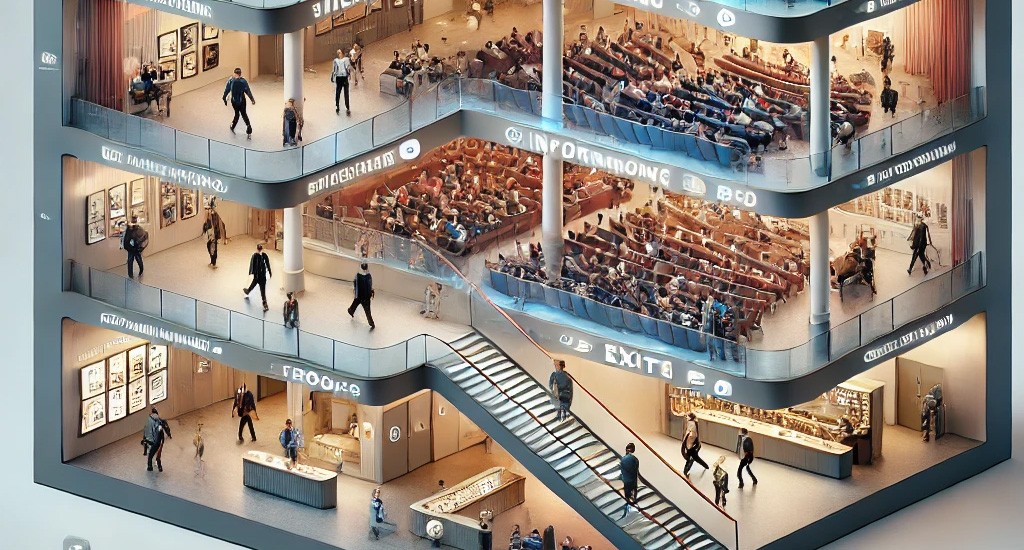Modern business is built on data. Companies that understand their customers and their needs are always one step ahead of the competition. In large shopping malls, sports stadiums, office complexes, and transportation hubs, understanding how and where people are moving becomes a key success factor.
Geomarketing is a technology that combines data on visitors' movements inside buildings with analytics tools. The goal? Create an accurate and detailed picture of customer behavior.
Indoors Navigation offers geomarketing solutions that help businesses answer their most important questions.:
- Where is the largest concentration of visitors in the building?
- What routes do customers choose?
- How long do they stay in certain areas?
- Which areas of the building are less in demand and require improvement?
How it works: Geolocation and digital twin technologies
Our solutions are based on modern technologies of digital building doubles and positioning systems. The platform is based on several key components:
- The digital twin of the building. This is an exact virtual copy of the space where the layout of premises, shops, crosswalks, as well as other infrastructure elements are displayed.
- Sensors and Wi-Fi tracking. Movement data is collected through sensors, mobile apps, and Wi-Fi access points. We record the movement of visitors and build anonymized routes.
- An analytical platform. The data is processed and transformed into user-friendly reports and visualizations. For example, heat maps, attendance schedules, and reports on customer location.
The integration of geomarketing with the Indoors Navigation platform allows businesses not only to receive data, but also to optimize processes based on it.
Main features and advantages
- Тепловые карты перемещений
With the help of heat maps, you can see where visitors spend the most time, and which areas of the building are practically unused. It is an ideal tool for:
- Optimization of the location of shops and kiosks.
- Planning of advertising campaigns and navigation signs.
- Improving the logistics of flows inside the building.
- Route analytics
What routes do visitors choose? How do they get to their destination? Route analysis helps you understand customer behavior and improve navigation. For example:
- If most visitors avoid a certain corridor, it is worth improving its lighting or signage.
- Routes to popular stores can be used to place advertising stands.
- User segmentation
With the help of analytics, you can divide the audience into segments by gender, age, time of visits, and other parameters. This allows you to:
- Create personalized advertising offers.
- Analyze the target audience in terms of specific locations.
- Evaluation of the effectiveness of advertising and promotions
Have you launched a new advertising campaign or held an event? Geomarketing allows you to accurately measure performance:
- How has the flow of visitors changed?
- Has the time spent in the desired area increased?
- How many people saw the ad and clicked through to the target store?
- Zone planning and optimization
Geoanalytics helps to design the building space correctly:
- Increase the traffic capacity of poorly loaded areas.
- Optimize the rental of premises.
- Expand popular areas with high concentrations of people.
Who is this solution for?
Our solutions are suitable for a wide range of industries and facilities.:
- Shopping malls and retail. Increasing the flow of customers, optimizing rentals, and accurate advertising targeting.
- Transport hubs. Improving passenger traffic, navigation planning, and managing advertising surfaces.
- Sports arenas and stadiums. Analyzing fan routes, optimizing points of sale and food courts.
- Office spaces and business centers. Management of internal processes and analysis of employee movements.
- Museums and cultural sites. Planning the routes of visitors and improving the attendance of exhibitions.
Cases: how does Indoors Navigation already help businesses
Case number 1: Shopping Mall
After the introduction of Indoors Navigation geoanalytics, one of the major shopping malls optimized its advertising campaigns and increased revenue by 15%. Heat maps showed where to place ads and improve navigation.
Case number 2: Railway station
Several "bottlenecks" were identified at the station, which prevented passengers from quickly finding the right platforms. Thanks to analytics and improved navigation, route travel time has been reduced by 20%.
Case number 3: Museum
The analysis showed that some halls of the museum remained almost unnoticed. Thanks to the updated signage and navigation, the attendance of less popular expositions increased by 2 times.
Geomarketing is not just about analytics. It is a tool for understanding the customer, improving the quality of service and increasing profits. Find out how Indoor Navigation can help your business today!
Learn more about how the Indoors Navigation Platform can transform your facility and offer your visitors a new level of comfort and safety. Contact us for a consultation and demonstration of the platform's capabilities.
👇 Subscribe and keep up to date with innovations! 👇




